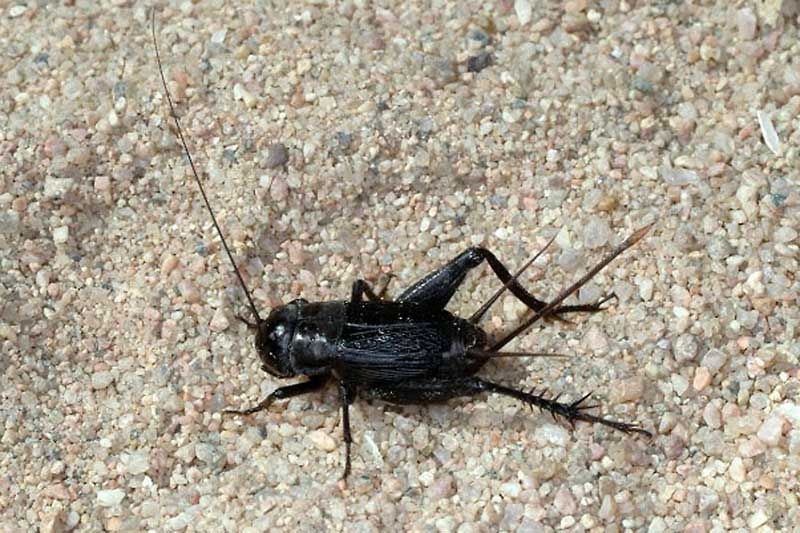Oct 22, 2014
by Lorraine Julien
Late summer and early fall brings on the stereophonic sound of Field Crickets. Wherever there are open fields or near the edge of forests, you’ll hear these amazing insects. Once the chill of fall arrives, the fields become silent again with song birds having flown south and the cricket mating season over. While crossing some fields during the Thanksgiving weekend I was surprised to hear crickets, though much quieter than they were in the summer.
Though it may seem like a kazillion crickets are tuning up, it is only the males that make sound. Male crickets rub their two wing-covers together in a “song and dance routine” to attract females. The hardened wing covers amplify and resonate to produce the noise we all know.
Females hear the song through “eardrums” (the scientific name is tympanum) on their front legs. Once a female selects and approaches a male, they do a courtship dance by moving and swaying back and forth.
There is an old boy scout trick that supposedly you could count the number of chirps per minute (if you happen to catch a male cricket) and use it to calculate the temperature (they chirp more slowly as it gets colder). Might be easier to just use a thermometer!
Field Crickets do not survive the winter. They die once cold weather arrives. Eggs, however, can survive the winter and hatch the following spring. Predators include birds, frogs, toads, turtles and other insects.
Besides serenading us, Field Crickets help people by eating the seeds of a lot of pesky weeds which would otherwise spread. Some examples are crabgrass and pigweed. They also eat other insects pests such as grasshoppers and flea beetles. While the crickets do some good, they can also be a real nuisance for farmers, sometimes doing damage to crops. They also may enter your home during the fall seeking warmth. Though they are completely harmless to humans, they can do damage as they can feed on fabrics, leather, fur, etc. There is nothing more annoying than hearing the constant chirping of a cricket trapped in your house!
Field Crickets can be up to an inch long, dark brown or black, with long antennae. Note that the cricket in the accompanying photo is missing its left antenna. I couldn’t write this without mentioning the Field Cricket’s ugly cousin, the Mole Cricket which is twice as long, ugly, brown and hairy. Its front legs look like those of a mole with claw-like feet for digging.
In most places, huge numbers of Field Crickets are infected with horsehair worms and if you place the crickets in very shallow water, the worms will emerge. These horsehair worms are called “nematomorpha” and can range in size from 50 to 100 cm long (20” to 39”) given the right growing conditions in larger hosts. The larvae of these worms are parasites and can be found in many species such as beetles, cockroaches, mantids and crustaceans, just to name a few. It is extremely rare but I did read about a couple of people in Asia who were infected by these worms. I suppose this could happen if you eat the insects raw. Sounds very gross but then it is getting near Hallowe’en!
Observations: During this past August, I parked in a remote area of a Walmart parking lot (to avoid getting my car dinged). The lot had a number of squared off areas for shrubs. As I left my car, a pair of Killdeer hopped out of the bushes seemingly quite put out that I’d invaded their small territory. Perhaps this was just a stopover on their way south.
I saw my one and only Monarch butterfly this year on October 6. Poor thing must have been looking for milkweed. I plan to plant a clump of milkweed on my property next year.
More Stories
- No Winner Yet in Catch The Ace But Fundraising Target Met
- South Frontenac Food Bank Opens Second Location in Battersea
- Sharbot Lake Pentecostal Church Anniversary - 1925-2025
- Frontenac Holistic Health Fair - September 20 At Storrington Centre
- Odd Year For Real Estate - But Sales Are Steady Year Over Year
- 193rd Kingston Fall Fair
- Kim Phuc - the Napalm Girl - To Visit Flinton In November
- South Frontenac Council - September 2
- Sticker Shock - EV Charging Station To Cost North Frontenac Township
- 30th Anniversary Verona Car Show

